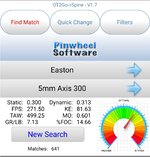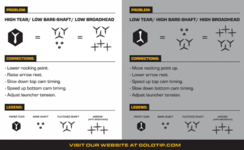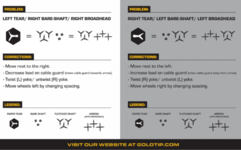Hey All,
I am looking to build a new arrow and need some help with my selection and arrow length. My current bow setup is a Matthews V3 27 1/2 draw @ 70#. I am looking at either the easton axis match grade or the easton pro comp. Was also looking at doing the iron will insert system with collars. Would you do the insert system and how many grains up front? Also what length do you think would tune the best? I am mostly hunting white tail but don't want to change arrows if I go for elk or mule deer. Thanks in advance.
BK
I am looking to build a new arrow and need some help with my selection and arrow length. My current bow setup is a Matthews V3 27 1/2 draw @ 70#. I am looking at either the easton axis match grade or the easton pro comp. Was also looking at doing the iron will insert system with collars. Would you do the insert system and how many grains up front? Also what length do you think would tune the best? I am mostly hunting white tail but don't want to change arrows if I go for elk or mule deer. Thanks in advance.
BK




